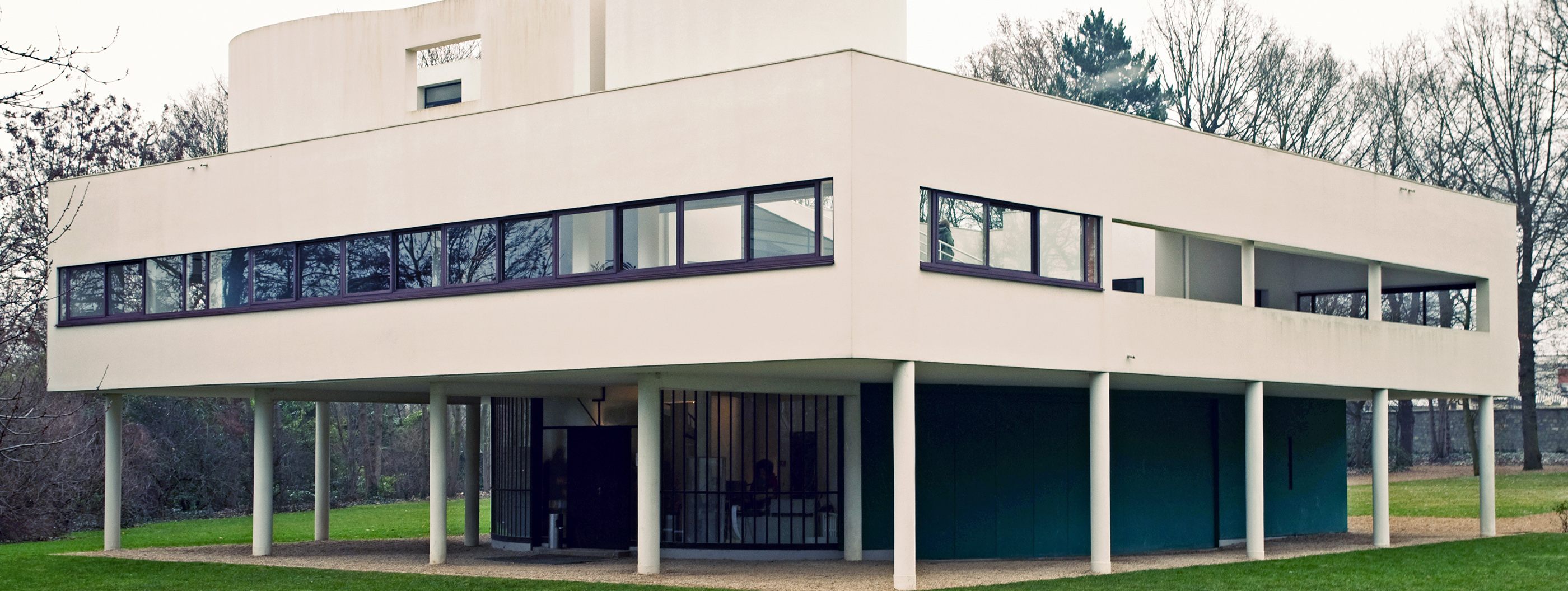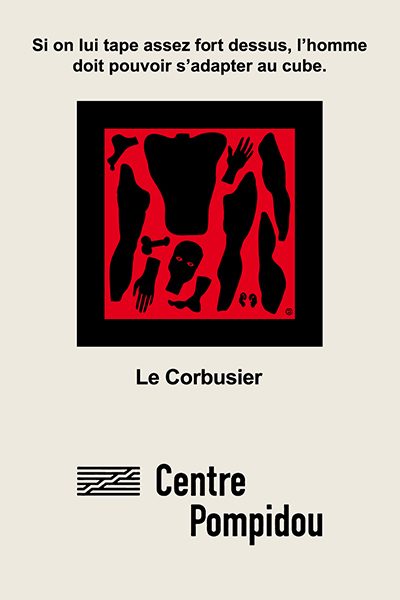 Le Corbusier, a French story
Le Corbusier, a French story Le Corbusier: career of a Frenchman by adoption, between utopias and erring
Whether in the shadow or in the light, the story of Le Corbusier is intertwined with the story of France. While the Centre Pompidou is currently organising an exhibition on him until the 3rd of August, here is a portrait of the one who has become the most important architect of his time.
Le Corbusier, a Frenchman by adoption
"Goodbye, my old master and my old friend. Good night." This is how André Malraux ended the funeral oration of Charles Edouard Jeanneret, also known as Le Corbusier, on the 1st of September 1969. On this day, in the Louvre courtyard, France pays a tribute to an adopted child. Born Swiss in 1887, the father of modern architecture has become French in 1930. More than just a nationality, it is the destiny of a whole nation that Le Corbusier embraced in the turmoil of the early 20th century.
Architecture as a second choice
As an adolescent, Charles Édouard Jeanneret decides to work in watchmaking, and more precisely as an enameller of dial switch, just as his father does. He gives up his aspiration when he loses an eye. Since then, he gets passionate about painting: he would paint all his life. Eventually, he chooses architecture in 1904, at 17 years old.
During the following ten years, he travels throughout Europe. He visits Paris in 1909 and works as an illustrator for the Perret brothers, who are manufacturers in the building industry and specialists of reinforced concrete. He meets Auguste, the youngest of the brothers. He would become one of the architects of France, as rebuilt in the wake of World War II.
Uncertain beginnings
In 1914, he is not yet called Le Corbusier and becomes an architect in his native town, La Chaux-de-Fonds. He designs his first visionary project: Dom Ino. Three concrete slabs superimposed and supported by six columns and joined by a staircase. The whole makes up the backbone of an adaptable house, cheap and designed for mass production. The concept is conceived for migrant populations of bombed cities in Flanders and Northern France. But he does not achieve success. Jeanneret struggles for three years with small orders before going to Paris in 1917.
Purism, order and Le Corbusier
Through Auguste Perret, he meets painter Amédée Ozenfant. Together, they both develop the purist movement. The artistic movement strives to achieve the return to order and sobriety in response to the cubist drift. The architect writes purist manifests under the name Le Corbusier. They achieve a certain success.
In parallel, he moves in with his cousin Pierre Jeanneret in an agency located at the 35 rue de Sèvres: he would only leave his home at his death. Le Corbusier is born. In the 20's, he becomes an important figure of architecture. In 1928, he starts the first International Congress of Modern Architecture. Among his creations of the time, the Villa Savoye in Poissy best represents his refined and forefront style. Stilts and roof terrace of the villa would become recurring parts of the Corbusean style.
From Moscow to Vichy
More than an architect, Le Corbusier wants to be an urban planner. As an heir to hygienism of the past century, he dreams of destroying slums of the interwar period to build clean, tidy and modern cities instead.
His ambitions bring him closer to totalitarian ideas. In the late 20's, he would even participate in the editorial board of openly fascist magazines like Le Faisceau, Plans or Préludes. After having drawn plans for Moscow in 1931, he would not hesitate ten years after to offer his services to French fascist government in Vichy, in vain. After the Liberation, he only escapes cleansing thanks to his friendship with André Malraux.
Utopian rebuilder
In a France in reconstruction, a few characteristics of Le Corbusier's modern cities finally materialise. This is case of the Cité radieuse (Radiant City), opened in 1952 in Marseille. In this 17-floors building on stilts, a miniature city hides: it is made of 360 apartments, a mall and a roof terrace on which a kindergarten is built next to a pool.
Everywhere in the world, his sense of modernity and utopia is appreciated. The Indian government grants him the planning of the new city of Chandigarh. Le Corbusier also participates in the construction of the United Nations headquarters, a true symbol in the hopes placed in the second half of the century.
Le Corbusier, French destiny
From World War I to the Vichy government and the creation of the UN, the story of Le Corbusier mingles with the story of France. First a pioneer, then a fascist, a modernist or a utopian, the genius architect has embraced the destiny of his country of adoption both in the shadow and the light. He made it radiate more than any other of his time. "Modern architecture has lost his greatest master", said the Kremlin at the time of his death. The White House added: "His influence was universal and his work is charged with an eternity only a few artists managed to achieve in our history..."
Exhibition "Le Corbusier, mesures de l'homme" (Le Corbusier, the measures of a man)
Photo credits: ©m-louis (bandeau carrousel) / Centre Pompidou (image texte)

